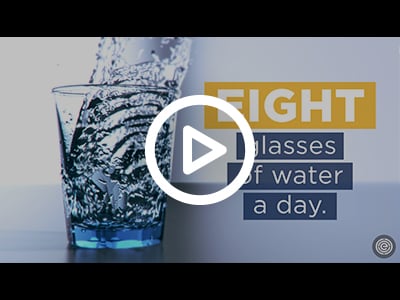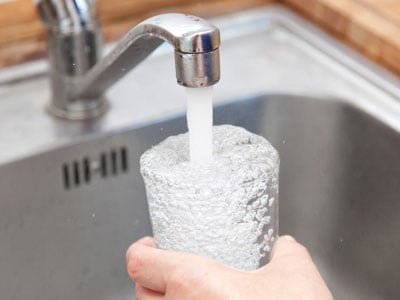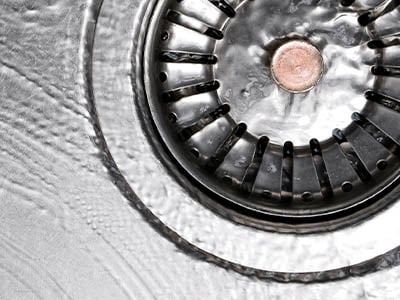New London Water & Fire Pro Authority
EWG's drinking water quality report shows results of tests conducted by the water utility and provided to the Environmental Working Group by the Alabama Department of Environmental Management, as well as information from the U.S. EPA Enforcement and Compliance History database (ECHO). For the latest quarter assessed by the U.S. EPA (January 2021 - March 2021), tap water provided by this water utility was in compliance with federal health-based drinking water standards.
Utility Details
- Cropwell, Alabama
- Serves: 6,477
- Data available: 2014-2019
- Source: Groundwater
Contaminants Detected
3
EXCEED
EWG HEALTH
GUIDELINES
8 Total Contaminants
- Legal does not necessarily equal safe. Getting a passing grade from the federal government does not mean the water meets the latest health guidelines.
- Legal limits for contaminants in tap water have not been updated in almost 20 years.
- The best way to ensure clean tap water is to keep pollution out of source water in the first place.
Looking for a countertop water filter?
Find out which filters earned EWG's recommendation
See the guideContaminants Detected
Haloacetic acids (HAA5)†
Potential Effect: cancer5.5x EWG'S HEALTH GUIDELINEHaloacetic acids (HAA5)
more aboutthis contaminant
Haloacetic acids are formed when disinfectants such as chlorine are added to tap water. The group of five haloacetic acids regulated by federal standards includes monochloroacetic acid, dichloroacetic acid, trichloroacetic acid, monobromoacetic acid and dibromoacetic acid.
Haloacetic acids (HAA5) was found at 5.5 times above EWG's Health Guideline.
EWG Health Guideline
This Utility
Legal Limit
National Average
State Average
ppb = parts per billion
Health Risks
The EWG Health Guideline of 0.1 ppb for the group of five haloacetic acids, or HAA5, was defined in a peer-reviewed scientific study by EWG and represents a one-in-a-million lifetime cancer risk level. This health guideline protects against cancer.
Pollution Sources
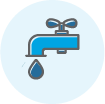
Treatment Byproducts
Filtering Options
Activated Carbon
Reverse Osmosis
Nitrate
Potential Effect: cancer2x EWG'S HEALTH GUIDELINENitrate
more aboutthis contaminant
Nitrate, a fertilizer chemical, frequently contaminates drinking water due to agricultural and urban runoff, and discharges from municipal wastewater treatment plants and septic tanks. Excessive nitrate in water can cause oxygen deprivation in infants and increase the risk of cancer. Click here to read more about nitrate.
Nitrate was found at 2 times above EWG's Health Guideline.
EWG Health Guideline
This Utility
Legal Limit
National Average
State Average
ppm = parts per million
Health Risks
The EWG Health Guideline of 0.14 ppm for nitrate was defined by EWG . This health guideline protects against cancer and harm to fetal growth and development.
Pollution Sources

Agriculture

Runoff & Sprawl

Naturally Occurring
Filtering Options
Reverse Osmosis
Ion Exchange
Nitrate and nitrite
Potential Effect: cancer2.2x EWG'S HEALTH GUIDELINENitrate and nitrite
more aboutthis contaminant
Nitrate and nitrite enter water from fertilizer runoff, septic tanks and urban runoff. These contaminants can cause oxygen deprivation for infants and increase the risk of cancer. Nitrite is significantly more toxic than nitrate. Click here to read more about nitrate.
Nitrate and nitrite was found at 2.2 times above EWG's Health Guideline.
EWG Health Guideline
This Utility
Legal Limit
National Average
State Average
ppm = parts per million
Health Risks
The health guideline of 0.14 parts per million, or ppm, for nitrate and nitrite is based on the equivalent health guideline for nitrate, as defined in a peer-reviewed scientific study by EWG. This guideline represents a one-in-one-million annual cancer risk level.Pollution Sources

Agriculture

Runoff & Sprawl

Naturally Occurring
Filtering Options
Reverse Osmosis
Ion Exchange
Includes chemicals detected in 2017-2019 for which annual utility averages exceeded an EWG-selected health guideline established by a federal or state public health authority.
† HAA5 is a contaminant group that includes monochloroacetic acid, dichloroacetic acid, trichloroacetic acid, monobromoacetic acid and dibromoacetic acid. HAA9 is a contaminant group that includes the chemicals in HAA5 and bromochloroacetic acid, bromodichloroacetic acid, chlorodibromoacetic acid and tribromoacetic acid. TTHM is a contaminant group that includes bromodichloromethane, bromoform, chloroform and dibromochloromethane.
Barium is a mineral present in rocks, soil and water. High concentrations of barium in drinking water increase the risk of cardiovascular disease and hypertension.
How your levels compare
EWG Health Guideline
This Utility
Legal Limit
National Average
State Average
ppb = parts per billion
Health Risks
The EWG Health Guideline of 700 ppb for barium was defined by EWG as benchmark that protects against harm to the kidneys and the cardiovascular system.
Pollution Sources

Industry

Naturally Occurring
Filtering Options
Reverse Osmosis
Ion Exchange
Chromium (total)
more aboutthis contaminant
Chromium is a naturally occurring metal, but industrial uses can elevate its levels in water. One form, hexavalent chromium, causes cancer. Total chromium is not a good indicator of the amount of hexavalent chromium in drinking water.
How your levels compare
This Utility
Legal Limit
National Average
State Average
ppb = parts per billion
Pollution Sources

Industry

Naturally Occurring
Filtering Options
Reverse Osmosis
Ion Exchange
Di(2-ethylhexyl) phthalate
more aboutthis contaminant
Di(2-ethylhexyl) phthalate, or DEHP, is a softener added to PVC plastics. Phthalates are hormone disruptors that target the male reproductive system.
How your levels compare
EWG Health Guideline
This Utility
Legal Limit
National Average
State Average
ppb = parts per billion
Health Risks
The EWG Health Guideline of 3 ppb for di(2-ethylhexyl) phthalate was defined by the Environmental Protection Agency as a one-in-a-million lifetime risk of cancer. Values greater than one-in-a-million cancer risk level can result in increased cancer cases above one in a million people.
Pollution Sources

Industry

Runoff & Sprawl
Filtering Options
Activated Carbon
Reverse Osmosis
Fluoride
more aboutthis contaminant
Fluoride occurs naturally in surface and groundwater and is also added to drinking water by many water systems.
How your levels compare
This Utility
Legal Limit
National Average
State Average
ppm = parts per million
Pollution Sources

Treatment Byproducts
Filtering Options
Reverse Osmosis
Total trihalomethanes (TTHMs)†
Total trihalomethanes (TTHMs)
more aboutthis contaminant
Trihalomethanes are cancer-causing contaminants that form during water treatment with chlorine and other disinfectants. The total trihalomethanes group includes four chemicals: chloroform, bromodichloromethane, dibromochloromethane and bromoform.
How your levels compare
EWG Health Guideline
This Utility
Legal Limit
National Average
State Average
ppb = parts per billion
Health Risks
The health guideline of 0.15 parts per billion, or ppb, for the group of four trihalomethanes, or THM4/TTHM, was defined in a peer-reviewed scientific study by EWG and represents a one-in-one-million lifetime cancer risk level.Pollution Sources

Treatment Byproducts
Filtering Options
Activated Carbon
Reverse Osmosis
Includes chemicals detected in 2017-2019 for which annual utility averages were lower than an EWG-selected health guideline established by a federal or state public health authori.
Other Contaminants Tested
✕New London Water & Fire Pro Authority compliance with legally mandated federal standards:
- From April 2019 to March 2021, New London Water & Fire Pro Authority complied with health-based drinking water standards.
Information in this section on New London Water & Fire Pro Authority comes from the U.S. EPA Enforcement and Compliance History Online database (ECHO).
LEARN MORE ABOUT THIS UTILITYWater Filters That Can Reduce Contaminant Levels
| Contaminant | Activated Carbon | Reverse Osmosis | Ion Exchange |
| CONTAMINANTS ABOVE HEALTH GUIDELINES | |||
| Haloacetic acids (HAA5) | ✔ | ✔ | |
| Nitrate | ✔ | ✔ | |
| Nitrate & nitrite | ✔ | ✔ | |
| OTHER CONTAMINANTS DETECTED | |||
| Barium | ✔ | ✔ | |
| Chromium (total) | ✔ | ✔ | |
| Di(2-ethylhexyl) phthalate | ✔ | ✔ | |
| Fluoride | ✔ | ||
| Total trihalomethanes (TTHMs) | ✔ | ✔ | |
Take Action
Contact Your Local Official
One of the best ways to push for cleaner water is to hold accountable the elected officials who have a say in water quality – from city hall and the state legislature to Congress all the way to the Oval Office – by asking questions and demanding answers.
LEARN MOREFilter Out Contaminants
Check out our recommendations for filters to protect your water against the detected contaminants.
EWG’S WATER FILTER GUIDE